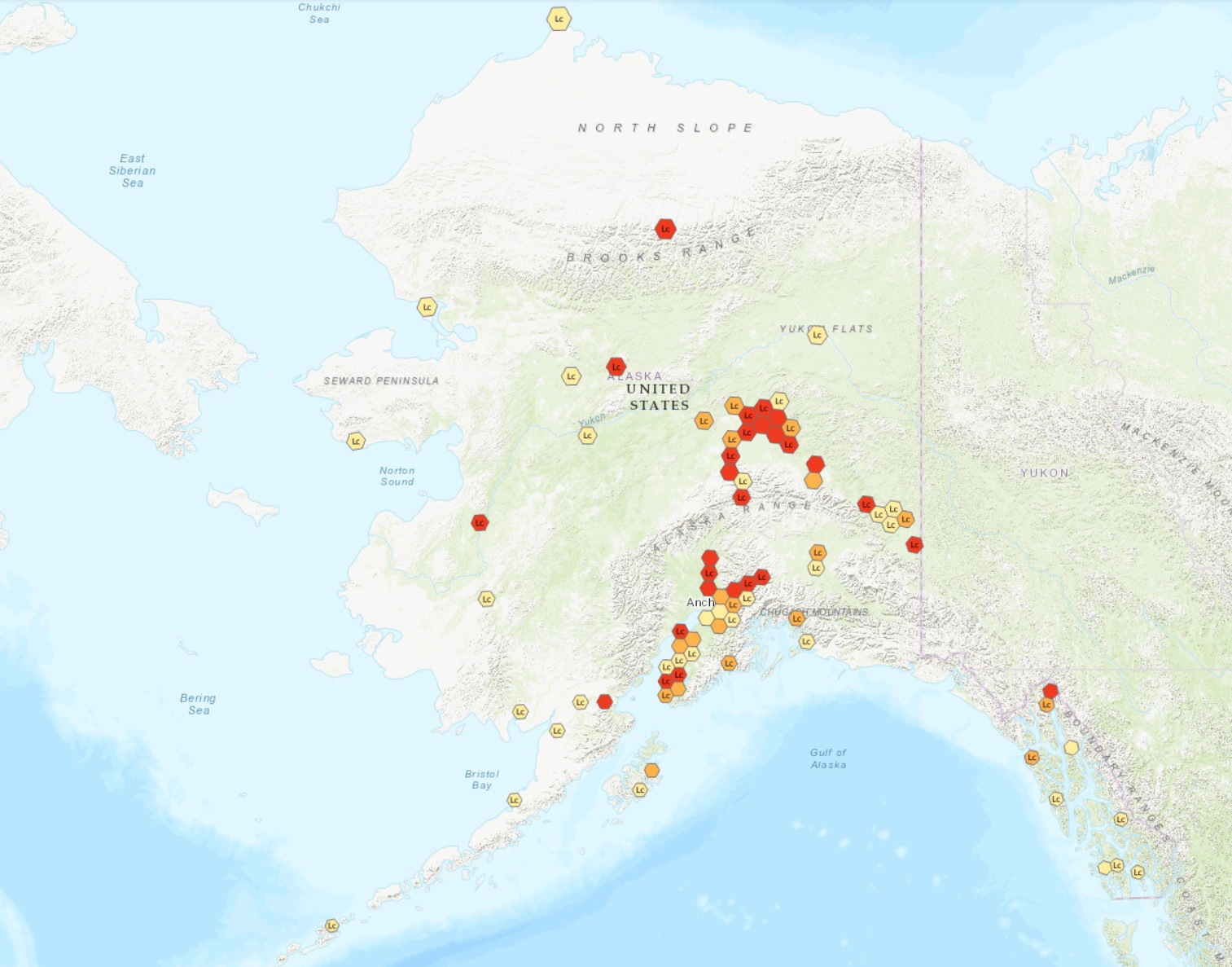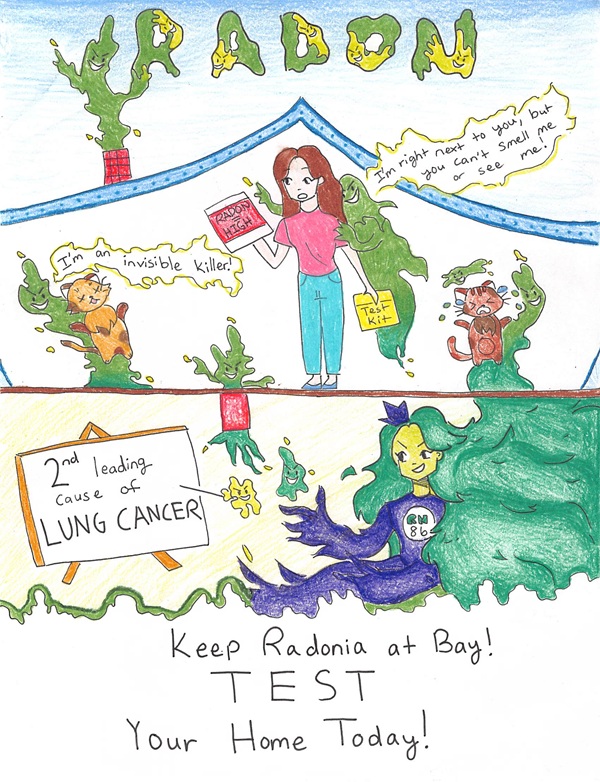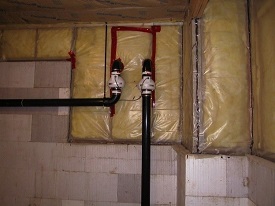You can't see or smell radon gas, but it's dangerous. Breathing in high levels of radon can raise your risk of lung cancer. In the United States, radon is the #2 cause of lung cancer, after smoking, and it is estimated to cause over 21,000 deaths each year. In fact, if you live in a home with high radon levels, smoking raises your risk of lung cancer by 10 times.
According to the Alaska Division of Public Health, radon is an under-recognized health risk in the state. Many homes tested throughout Alaska have radon levels above the Environmental Protection Agency's (EPA) limit of 4 picocuries per liter of air (pCi/L). Testing your home is the only way to find out if you have a radon problem. If you do, then you can fix it.
Please note: The 2025 radon testing season has ended, but we will continue to accept home radon test kit requests for next winter! Please request a test kit here and we will add you to our wait list. Requests will be fulfilled once DGGS resumes new radon testing kit delivery in December 2025.
DISCLAIMER: This online map serves as a guide to where radon may occur; however, indoor radon concentrations can vary greatly from building to building. The only way to know if your home contains radon is to test.

Access the full featured Alaska Radon online map.
January is National Radon Action Month! It's also a great time to test your home or building for radon. To celebrate and raise public awareness of radon in Alaska, DGGS gives away radon testing kits to Alaskan residents each January. Thanks to all participants in 2025, and we look forward to National Radon Action Month 2026! Request a free radon test kit for next January or contact National Radon Program Services for a low-cost test kit now. If you were given a radon test kit (by an individual or organization) without completing our online request, please fill out this questionnaire to register your radon. You may also contact Paul Goodfellow at paul.goodfellow@alaska.gov or 907-269-6401 to request a kit or ask questions.
The Alaska Radon Poster Contest serves to raise awareness of the harmful effects of elevated levels of indoor radon gas and promote testing and mitigation of indoor radon. Alaskan students aged nine to 14 years-old compete to produce the most informative, original, and eye-catching poster for educating other Alaskans about the risks of radon. Congratulations to Luciana Liu, from Goldenview Middle School in Anchorage, winner of the fourth annual Alaska Radon Poster Contest, who has been advanced to the National Radon Poster Contest. Learn more and see previous winners!

2024 Alaska Radon Poster Contest winner submitted by Luciana Liu, Goldenview Middle School in Anchorage.
Radon gas is derived from rocks and dirt in the ground, beginning with the radioactive decay of naturally occurring uranium. There is always some radon in the air around us, but a problem occurs when it leaks in through cracks or gaps underneath the house, causing a potential build-up of radon gas inside the home.

One picocurie (abbreviated as pCi) represents 2.2 radioactive disintegrations of radium (radon's radioactive parent) per minute. At a level of 4 pCi/L, the EPA's recommended action level, there will be approximately 12,672 radioactive disintegrations (radon particles) in one liter of air during a 24-hour period.
When you breathe in radon gas, the radioactive particles can get trapped in your lungs and further decay to polonium and other radioactive solids. Over time, they can cause lung cancer. The risks from radon depend on two things:
If the radon level in your home is measured at 4 pCi/L or greater, the EPA recommends mitigating your home to lower its radon concentration. Mitigating your home may involve tuning the air handling system, sealing holes in your vapor barrier, or sealing cracks in your slab. Additional steps may be taken if the radon level remains high.

Any spot where the house is in contact with the ground should be sealed and airtight. Fill cracks in your slab to keep air from the ground from getting into the house. Photo credit: John Ellison.

Houses can be mitigated for radon by installing perforated pipe and an inline fan to pull the radon out of the ground around the house and vent it outside away from any windows. Photo credit: John Ellison.
In the entire U.S., one in 15 homes have high radon levels. Unfortunately, we do not know the statistics for Alaska. DGGS and University of Alaska Fairbanks' (UAF) Cooperative Extension Service are creating a radon database and updating the Alaska radon map (above) to better understand radon potential and identify where elevated levels of radon exist in the state. Alaskans are invited to contribute radon test results to the database, which will aggregate results to help preserve confidentiality. Previously collected and new test results are both helpful.
Radon test kits are available in hardware stores and other retail outlets, and for purchase online. Radon service providers will also conduct testing for you. Please fill out a data release form and questionnaire for each test result, so that your information can help other Alaskans. Please contact Paul Goodfellow, paul.goodfellow@alaska.gov or (907) 269-6401, to submit your results!

This project began with funding from the EPA's Environmental Information Exchange Network and continues with funding from the EPA's State Indoor Radon Grant to Alaska's Department of Environmental Conservation, Division of Air Quality. The grant is implemented through a partnership of DGGS and UAF's Cooperative Extension Service.